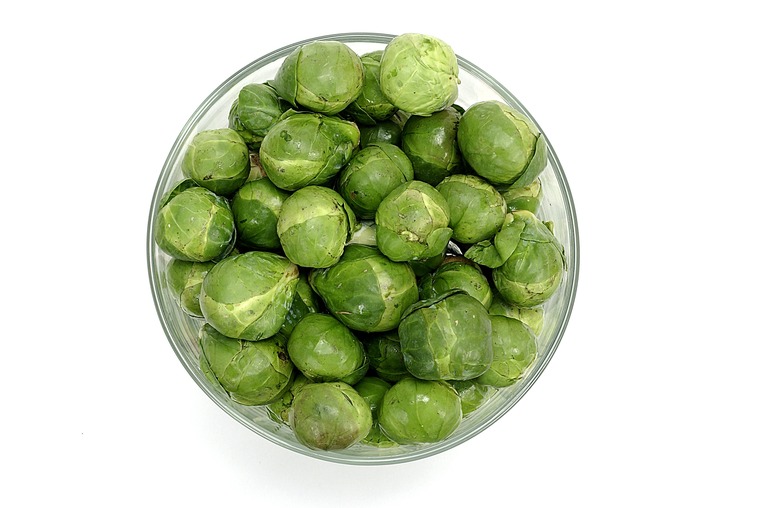Growing Stages Of Brussels Sprouts
A cool weather crop belonging to the cabbage family, Brussels sprouts (Brassica oleracea) actually improve in taste and quality after a light frost. Brussels sprouts, originally named for Brussels in Belgium where they have grown for close to 400 years, mature in 80 to 100 days and produce numerous small sprouts along a single, upwards-reaching stem.
Starting
Step 1
You can start Brusseld sprouts indoors or sow them directly in ground. Regardless, plant your seeds, indoors or outdoors, at least three months before the first anticipated frost date in the fall. Brusseld sprouts require a significant amount of time to mature. Choose an area that receives plenty of full sunlight, and prepare the soil so it is nutrient-rich, well-aerated, and well-draining. You can expect Brusseld sprout seedlings in five days if temperatures are close to 85 degrees Fahrenheit, and in eight days when the air temperature is around 45 degrees.
- A cool weather crop belonging to the cabbage family, Brussels sprouts (Brassica oleracea) actually improve in taste and quality after a light frost.
- You can expect Brusseld sprout seedlings in five days if temperatures are close to 85 degrees Fahrenheit, and in eight days when the air temperature is around 45 degrees.
Seedlings
Step 1
If you direct planted your seeds, thin the Brussels sprout seedlings when they reach 4 to 5 inches in height, leaving 14 to 24 inches of space between plants. Add mulch to the base of the seedlings to conserve water, and keep soil temperatures high as the weather cools. Reduce the number of weeds competing with the plants for nutrients, and add extra nutrients to the soil over the growing period. As they mature, Brussels sprout seedlings produce leaves that are rather like cabbage leaves, and two to four weeks after planting, the plants will be around 12 inches tall. Brussels sprouts can reach a mature height of 2 to 3 feet.
Sprouting
Step 1
Around 50 days after planting, sprouting will begin. Brussels sprouts form at the leaf axil, the joint between the leaves and the main stalk. These sprouts look like miniature cabbages, and they will start at the bottom of the stalk and grow upwards. To encourage rapid and large sprout formation, remove the top sprout when the sprouting has reached between 10 and 12 inches from the base of the stalk. As the sprouts grow larger, you can remove some of the leaves, particularly the ones lower on the plant, to give more room for the sprouts to develop. This will be later on in the growing season, and the shade protection provided by the leaves will not be as necessary.
- If you direct planted your seeds, thin the Brussels sprout seedlings when they reach 4 to 5 inches in height, leaving 14 to 24 inches of space between plants.
- As the sprouts grow larger, you can remove some of the leaves, particularly the ones lower on the plant, to give more room for the sprouts to develop.
Harvesting
Step 1
Harvest the sprouts when they reach between 1 and 2 inches in diameter, or are between marble and golf ball-sized. The leaves of the plant will also begin to yellow as the sprouts reach maturity. This will be between 90 and 100 days after planting. While Brussels sprouts grow well in cooler temperatures, they will develop more slowly and will stop growing after the first full freeze. A light frost will not damage the plants.
References
- Republic of South Africa, Agriculture, Forestry and Fisheries: Brussels Sprouts
- San Diego County Master Gardener Association: Brussel Sprouts
- North Carolina State University: Brussels Sprouts
- University of Nebraska Lincoln: Growing Brussels Sprouts
- University of Illinois Extension: Brussels Sprouts
- National Gardening Association: Brussesl Sprouts
- Mother Earth News: Brussels Sprouts: Love 'Em, Don't Leave 'Em
- Cornell University: Brussels Sprouts
